World Economic Forum Global Risks Report for 2023 projection or a promise???
And the reports keeps on getting published . This time let’s see about the World Economic Forum Global Risks Report for 2023.
From the title alone you can all understand that its not a report stating positive things its analysis is about possible dangers for the world economy and their effect if those things becomes a reality. It also states the current risks and problems.
The report is divided into for Chapters
Chapter 1: Global Risks 2023: Today’s Crisis
Chapter 2: Global Risks 2033: Tomorrow’s Catastrophes
Chapter 3: Resource Rivalries: Four Emerging Futures
Chapter 4: Conclusion: is preparedness possible?
Now lets see some of the what i highlighted.
In the first chapter we are seeing what the author is seeing as the crisis we have today from the ones he is writing i have highlighted the Cost-of-living crisis.
The above is the one that affects us all in our every day life, its the one that dictates our psyche and the way we live our lives.
Ranked as the most severe global risk over the next
two years by GRPS respondents, a global Cost-of living crisis is already here, with inflationary pressures
disproportionately hitting those that can least afford
it. Even before the COVID-19 pandemic, the price
of basic necessities – non-expendable items such
as food and housing – were on the rise.1 Costs
further increased in 2022, primarily due to continued
disruptions in the flows of energy and food from
Russia and Ukraine. To curb domestic prices, around
30 countries introduced restrictions, including export
bans, in food and energy last year, further driving
up global inflation.2
Despite the latest extension, the
looming threat of Russia pulling out of the Black Sea
Grain Export Deal has also led to significant volatility in
the price of essential commodities.
Although global supply chains have partly adapted,
with pressures significantly lower than the peak
experienced in April last year,3
price shocks to core
necessities have significantly outpaced general
inflation over this time (Figure 1.4). The FAO Price
Index hit the highest level since its inception in 1990
in March last year.4
Energy prices are estimated to
remain 46% higher than average in 2023 relative
to January 2022 projections.5 The relaxation of
China's COVID-19 policies could drive up energy
and commodity prices further - and will test the
resilience of global supply chains if policy changes
remain unpredictable as infections soar.
Cost-of-living crisis was broadly perceived by
GRPS respondents to be a short-term risk, at peak
severity within the next two years and easing off
thereafter. But the persistence of a global cost-ofliving crisis could result in a growing proportion of
the most vulnerable parts of society being priced out
of access to basic needs, fueling unrest and political
instability. Continued supply-chain disruptions
could lead to sticky core inflation, particularly in
food and energy. This could fuel further interest rate
hikes, raising the risk of debt distress, a prolonged
economic downturn and a vicious cycle for fiscal
planning.

Chapter 2 Global Risks 2033: Tomorrow’s Catastrophes
Well I think here everything is highlighted but the most important after so many years with covid-19 and while still being in a pandemic is Human health: perma-pandemics and chronic capacity challenges
Global public health is under growing pressure
and health systems around the world are at risk
of becoming unfit for purpose. The COVID-19
pandemic further amplified ever-present spectres
and emerging risks to physical and mental health,
including antimicrobial resistance (AMR), vaccine
hesitancy and climate-driven nutritional and
infectious diseases (described in ‘False Positive:
Health Systems under New Pressures’ in our
2020 edition, published before the pandemic took
hold). Given current crises, mental health may also
be exacerbated by increasing stressors such as
violence, poverty and loneliness.
There is also a rising risk of a “panic-neglect”
cycle. As COVID-19 recedes from the headlines,
complacency appears to be setting in on preparing
for future pandemics and other global health
threats. Healthcare systems face worker burnout
and continued shortages at a time when fiscal
consolidation risks deflecting attention and resources
elsewhere. More frequent and widespread infectious
disease outbreaks amidst a background of chronic
diseases over the next decade risks pushing
exhausted healthcare systems to the brink of failure
around the world
For the third Chapter Resource Rivalries: Four Emerging Futures
I have highlighted Polycrisis: natural resources, climate and cooperation and more especially
Supply-chain crises of recent years have highlighted
the need for resilience in traditional strategic sectors.
Reliable and cheap access to the most basic of
necessities – food, water and energy – underpins the
critical functioning of societies. Early data suggests
that current crises are driving a worrying reversal of
recent progress. An additional 200 million people
faced acute food insecurity last year compared
to 2019, and the number of people worldwide
without electricity rose to an estimated 774 million,
the equivalent of pre-pandemic levels.2
As noted
in Chapter 1.2, Cost-of-living crisis, supply
crises of this nature can be highly destabilizing,
exposing the fragility of states and leading to loss
of life, widespread violence, political upheaval and
involuntary migration.
Demand for food, water and critical metals and
minerals is escalating. This reflects a range of
factors, including continued population growth,
anticipated to reach 8.5 billion by 2030,3
and
socioeconomic advancement, with a push to achieve
the UN’s Sustainable Development Goals (SDGs) by
the target date of 2030. Global food consumption
is projected to increase by 1.4% annually over the
next decade, concentrated in low- to middle-income
countries, versus a 1.1% per annum increase in
production.4
One estimate places the gap between
water demand and supply at 40% by 2030, with a
dramatic and unequal increase in demand between countries
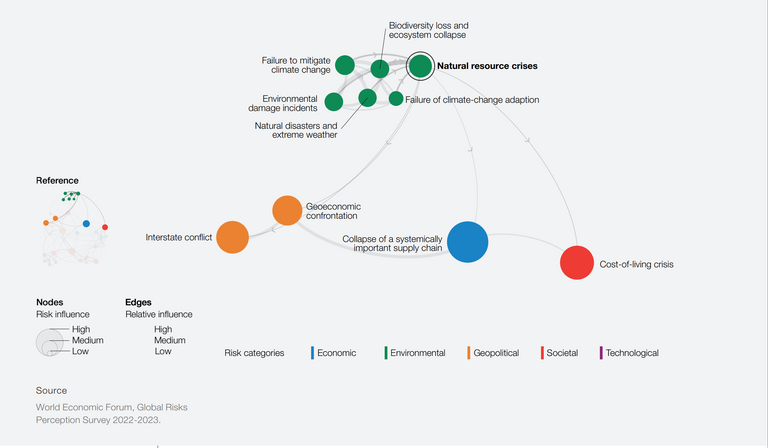
Chapter 4: Conclusion: is preparedness possible?
is some final notes and the conclusion so its all highlighted and i suggest you read the whole report it will give you aa different perspective.
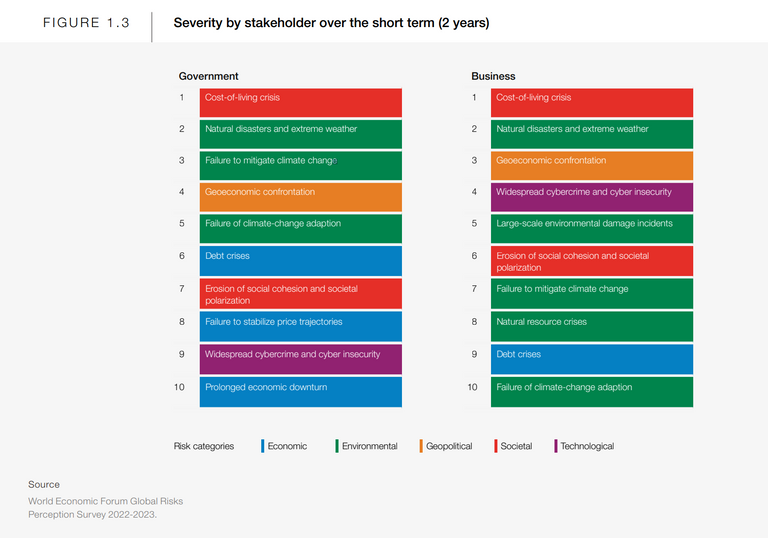
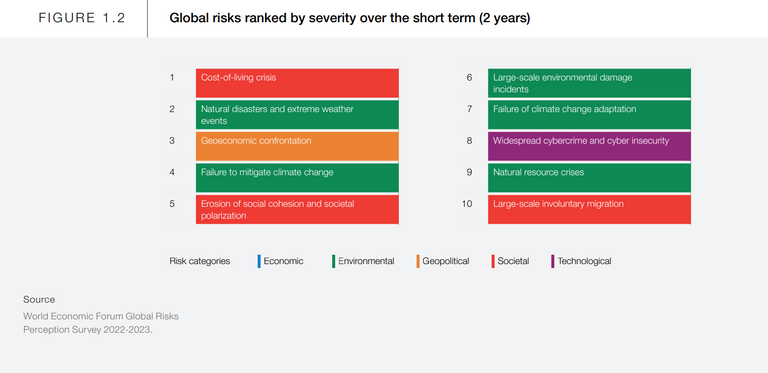
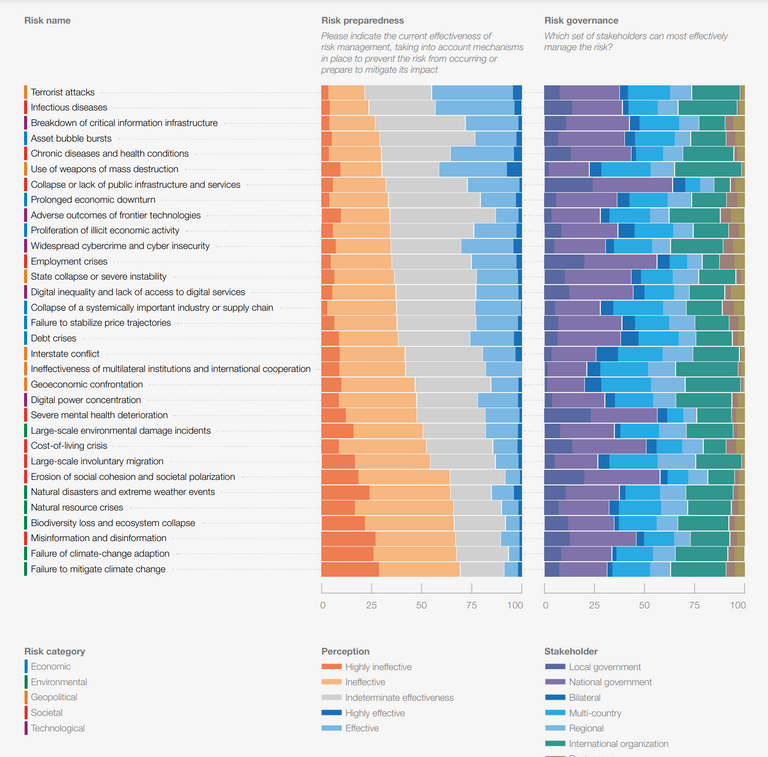
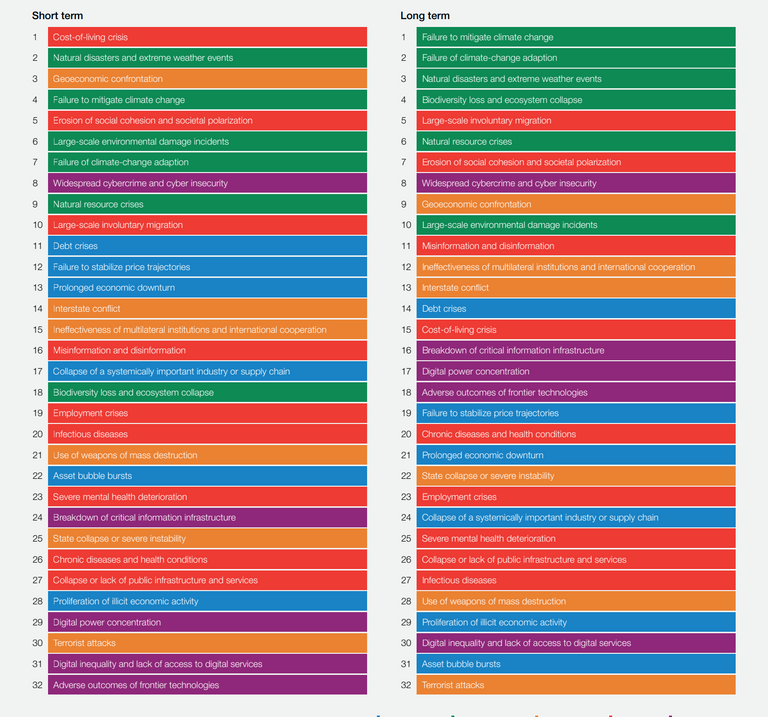
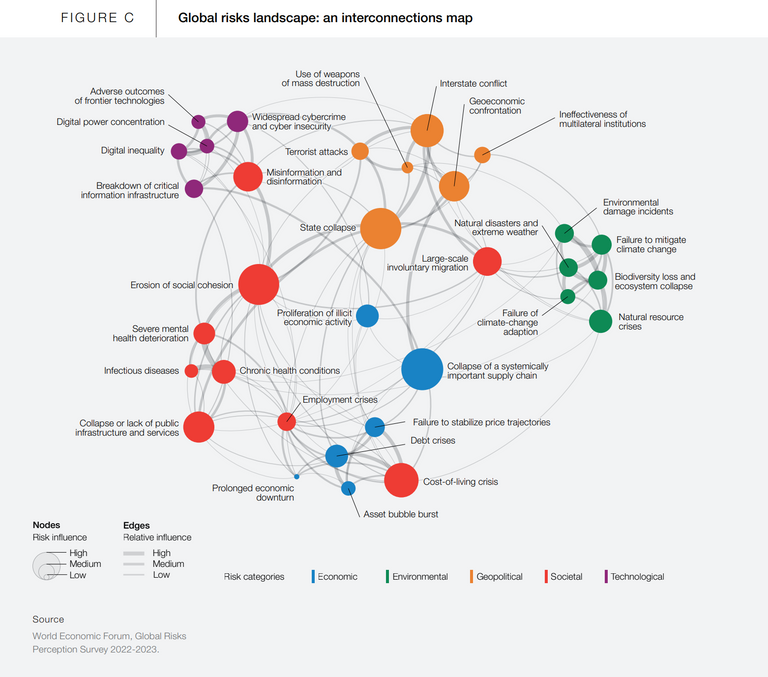
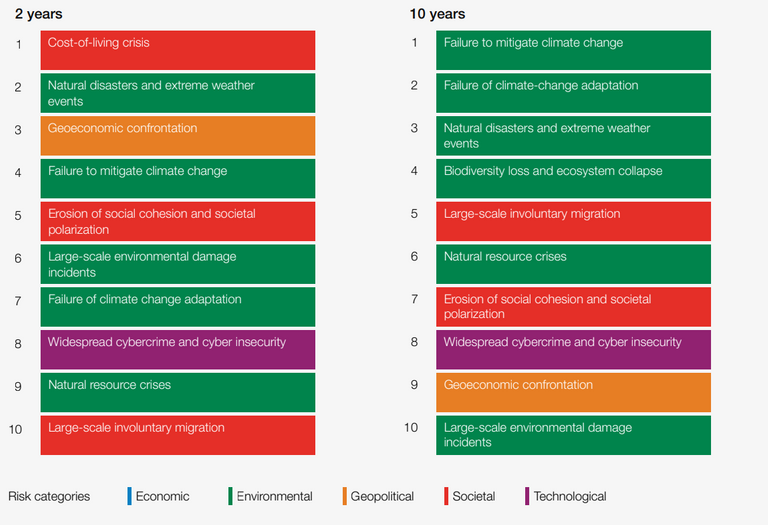
https://www3.weforum.org/docs/WEF_Global_Risks_Report_2023.pdf
https://www.weforum.org/reports/global-risks-report-2023/digest
Posted Using LeoFinance Beta
https://twitter.com/2762386109/status/1617069420869832705
The rewards earned on this comment will go directly to the people( @steemychicken1 ) sharing the post on Twitter as long as they are registered with @poshtoken. Sign up at https://hiveposh.com.
Gay
lol
stop sharing their self-fullfilling prophecy pseudo-science crap
everyone can make his life and environment as he'd like - except the masses who just want to end in this dystopia and put their life energy into manifesting what the big elite wants and trying to block the few alive from manifesting for themselves
do not understand me wrong. with 'everyone can' I see this as basic tendency, not that everyone will get what he wants stuffed up their ass nor that it will be easy at all
I'm also truly really struggling to JUST SURVIVE with my pain in this system.. while others appear to have a 'better' life than me (no pain, no hunger, no freezing, enough money, 'friends' and compensation) but will this truly save them?
Congratulations @steemychicken1! You have completed the following achievement on the Hive blockchain And have been rewarded with New badge(s)
You can view your badges on your board and compare yourself to others in the Ranking
If you no longer want to receive notifications, reply to this comment with the word
STOPCheck out our last posts:
Support the HiveBuzz project. Vote for our proposal!